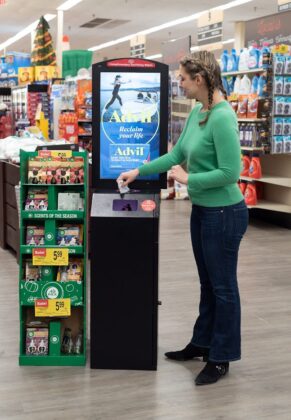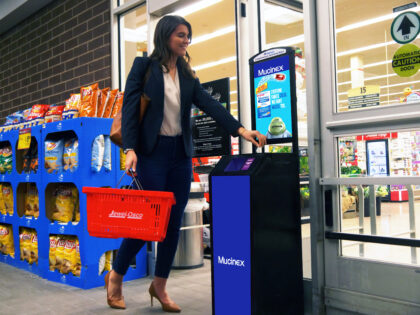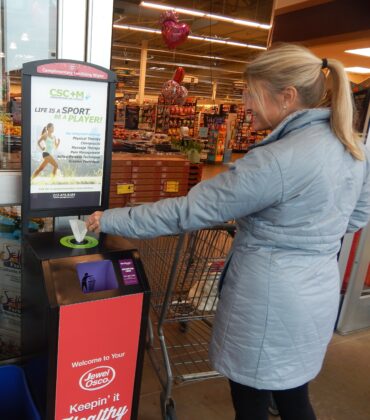In our increasingly digital world, the businesses that succeed make full use of the latest technologies and innovations. In advertising, that latest innovation is the automation of digital advertisements. If you’re looking to figure out what the entails and how to get started, keep reading!
What is Programmatic DOOH?
Programmatic DOOH is the automated process of buying and delivering digital billboard ads. It simplifies the ad buying and selling process by using algorithms and data to optimize ad placement. It helps advertisers effectively reach their target audience and maximize their ad spend.
Before we dive into how it works, there are key differences between regular DOOH and programmatic DOOH you need to know.
Difference between DOOH and Programmatic DOOH
Traditional DOOH
Traditional DOOH requires you to purchase ad space and schedule predetermined times for your ads to appear. While traditional DOOH can still have the interactive and eye-catching elements that make digital ads engaging, it lacks the latest innovations to ensure your displays reach your target audience and maximize reach.
Programmatic DOOH
Programmatic DOOH expands on what the traditional form does by using automation for media planning and buying. By using data-informed target audience planning and activation, advertisers can home in on outcome-based media buying. Another advantage of Programmatic DOOH is that media buyers can execute omnichannel activation, creating efficiency and scale for their campaigns.
Let’s say that you want your programmatic digital ad to appear on a highway billboard after 5 PM when there’s high traffic and on a day with good weather. Well, you can select those factors and the ad space will be automatically purchased when the correct conditions are met.
Examples
Programmatic DOOH’s real-time targeting allows you to tailor ads to certain real world contexts to create a memorable impact on consumers and help them connect with your brand. Here are some really cool examples of how brands have used these digital ads to their fullest potential:
British Airways Magic of Flying campaign
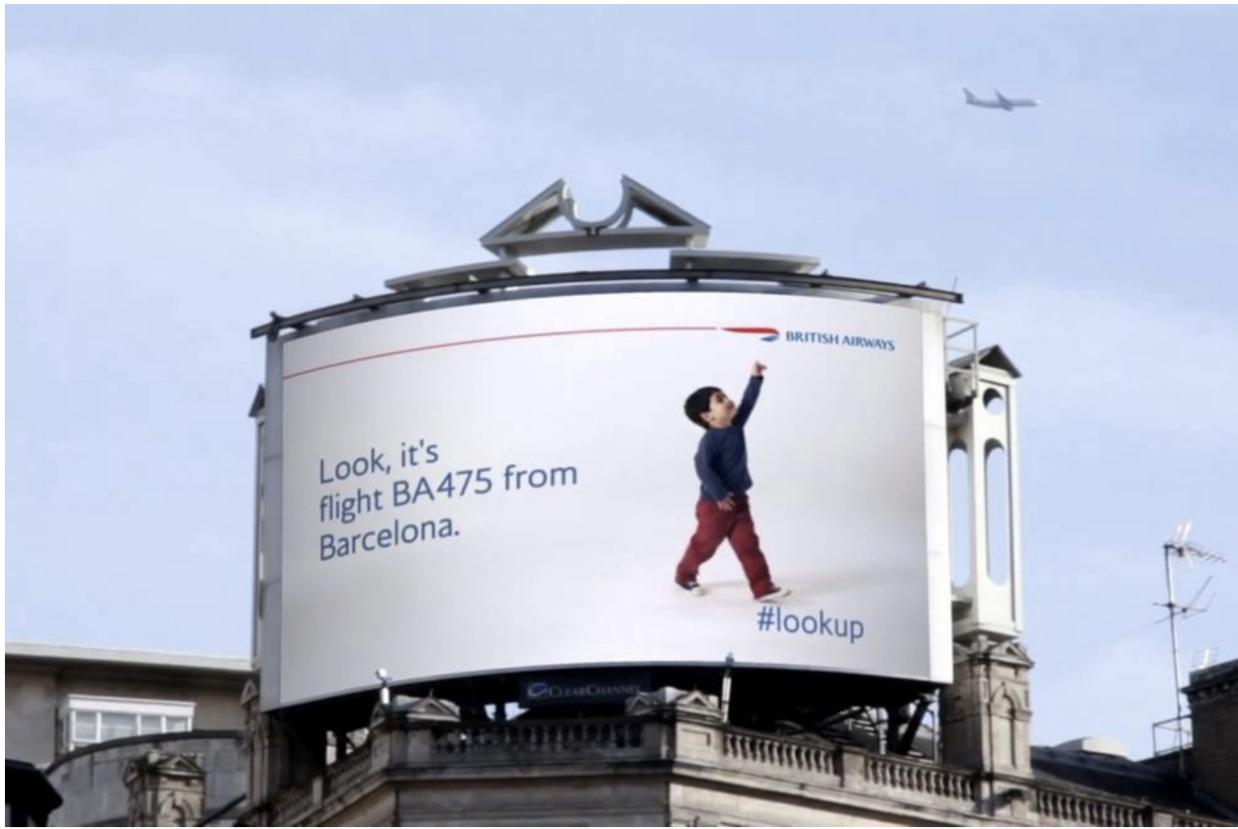
This British Airways programmatic digital advertisement would only trigger with an image of a toddler pointing up to the sky when a plane flew over the billboard. By carefully setting predetermined factors, you can provide consumers with meaningful contexts to understand your brand and product.
Audi’s “Sixth Sense” Campaign
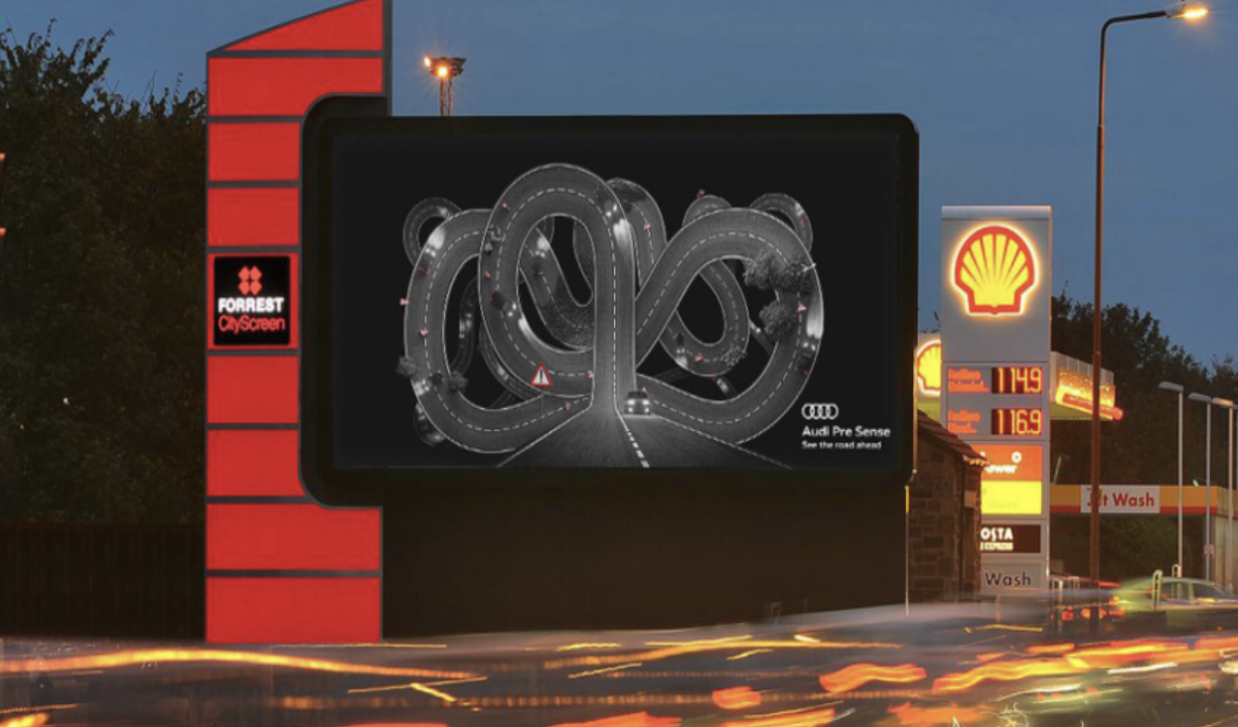
Audi’s marketing campaign utilized both traffic, time, and weather to promote different features of their latest vehicle. When there was heavy traffic, the programmatic ad would switch to a display on Audi’s “Pre-Sense” feature that tightens seatbelts when the car detects a potential collision. This ad could change once again during heavy rain or snow to show viewers Audi’s all-wheel drive technology, Quattro-on-demand, which is designed to increase handling in such conditions.
5 Benefits of Programmatic DOOH
Increased targeting and flexibility
Other than personalized online ads that utilize user data, there aren’t any other forms of advertisements that can strategically target different consumer groups like programmatic DOOH ads.
These ads make use of real time data on audience demographics, weather, and time. Then, an automated system finds the most relevant digital screens for your ads to be displayed. Rather than having to create an advertisement that appeals to everyone, the flexibility of programmatic DOOH allows you to create an ad for a specific audience and still be sure that you reach the right people at the right time.
Optimizing ad rates
The automated aspect of programmatic ads can save you time and money. Programmatic platforms allow users to access DOOH inventory, manage budgets, and automate the buying process.
With standard OOH advertising, you generally pay a hefty display fee for four week periods. This means you are paying for your ad to be displayed even at 4 AM when consumers aren’t around. Programmatic advertising fixes this issue since you are only paying for ad space when your target audience and ideal conditions are present.
Split testing ad placements
Split testing a marketing campaign involves featuring two or more variations of an ad and tracking impressions, conversions, and returns on investment for each variation. By performing this test run, you can see which variation resonates best with your target audience before fully launching your campaign.
What makes programmatic digital ads ideal for split testing is that you can guarantee that each ad variation is displayed under the same conditions and the only factor impacting consumer response is your differing ads.
Enabling QR codes
Digital and non-digital OOH ads can feature a QR code, but programmatic ads can offer different QR codes depending on surrounding conditions. For example, a clothing line may feature a QR code that takes consumers to a bathing suit selection on a sunny summer day but then choose to feature their raincoat selection on days with bad weather.
Geofencing features
One of the factors you can select for your programmatic ads is the location you want them displayed. You may only want your brand featured on digital ads near certain stores or shopping malls or you may want to restrict it to digital billboards and other signage in a specific neighborhood.
How Does Programmatic DOOH Work?
OOH advertising used to be a hassle as you’d need to coordinate with various middlemen to get your brand displayed. Programmatic DOOH has made this process far more efficient by allowing businesses to bid for ad space in a similar fashion to how online advertising is bought and sold.
Through purpose-built online pDOOH platforms, you select the conditions you want met, such as footfall data and specific day times, and the ad space will be automatically purchased when your customized conditions are met.
Best Types of Programmatic DOOH
Real-Time Bidding
Real-time bidding (RTB) allows advertisers to use an Open Exchange (OPEX) to bid on ad spaces from various publishers using real-time bidding. The process begins with the DOOH inventory owner who will send a bid request that contains conditional information to demand-side platforms (DSPs). DSPs represent the advertiser, and they will assess the bid request to see if it matches your ideal preconditions.
The bid price for ad space is based on how many advertisers are willing to pay for it, so DSPs evaluate the price and will only make a purchase if it falls within your budget.
Programmatic Guaranteed
This form of programmatic DOOH advertising combines the benefits of automation with guaranteed ad placements. With real-time bidding, you aren’t guaranteed ad space, but with programmatic guaranteed (PG) advertising, you can secure ad inventory in advance with pre-negotiated, fixed pricing and impressions while still setting conditions to maximize your reach to target audiences.
Private Marketplaces
Private marketplaces (PMPs) are premium DOOH inventory owners that only sell to selected advertisers and publishers. Partnering with a PMP can be difficult, but advertisers can benefit from exclusivity and transparency as they’ll have access to more information about the inventory they are buying, including all the display context and specific screen locations.
Dynamic Creative Optimization
Dynamic Creative Optimization in digital ads allows advertisers to include elements in their ads that respond to data signals from the surrounding environment. The British Airways advertising campaign that showed an image of a child pointing to the sky anytime a plane passed overhead is an example of this.
Programmatic Direct
Programmatic Direct ad buys can still use automated ad buys but comes with the guaranteed ad placements of traditional direct buying. The way that this differs from Automated Guaranteed ad purchases is that Programmatic Direct allows for a negotiation process between advertisers and publishers. This negotiation allows for increased control and transparency. Automated Guaranteed cannot supply this negotiation because the process is inherently automated.
If you’re just getting started in digital advertising, Programmatic Guaranteed ad purchasing is likely your best choice because you can buy ad inventory ahead of time to ensure the marketing campaign you spent so much time on is displayed.
Challenges of Programmatic DOOH
Inventory availability
Programmatic DOOH comes with a ton of benefits, but this also leads to inventory shortages since so many advertisers are looking to start automated digital marketing campaigns. Purchasing premium ad space can be difficult, especially in popular locations, as bidding can be quite expensive and drive up costs.
Data integrity
No industry is immune to fraud, and that includes digital advertising. While it’s rare, some DOOH inventory owners will report invalid traffic or fake impressions on their available ad space. Be sure you thoroughly research an inventory supplier before getting into business with them.
Integrating marketing data
Successful marketing campaigns continually assess how their advertisements are performing, and there is a lot of data to collect and analyze with programmatic DOOH ads. You’ll need to integrate incoming data into your existing platforms or create new data management systems.
Data sources for Programmatic DOOH
Location data
It’s crucial to utilize location data that tells you exactly where digital displays are located. You’ll want your ad to reach your target audience, so it should be shown near the stores, venues, and neighborhoods they frequent.
Audience demographics
Before purchasing ad space, you should assess the statistics on the demographic makeup of those that frequent the digital display. This data can be gathered from inferences made with location data such as public records and the regional makeup of a zip code or neighborhood to provide you with a snapshot of the audience makeup. To gather real-time information, DOOH advertising inventory owners can periodically conduct surveys on people in the vicinity of the display to collect more information on the audience.
Contextual data
There are a variety of forms of contextual data that will tell you about the surrounding conditions of the digital display, such as the weather, traffic patterns, or other nearby events. By utilizing contextual data, you can create tailored ads that are more likely to have an impact on consumers, such as an ad for an umbrella on a rainy day.
How To Measure The Effectiveness Of Your Campaigns
With all the data that’s collected with programmatic DOOH campaigns, it’s actually quite easy to measure the effectiveness of your marketing campaign with various key performance indicators (KPIs).
- Impressions: The number of impressions can be tracked using camera-based systems to count the number of individuals passing by your display.
- Viewability: You can assess whether your ad was actually viewed through data that reports the duration your ad was displayed.
- Engagement: Engagement metrics are important to track to make sure that audiences are making a connection with your brand. Data on the average time viewers spend near the screen and the interaction rates (how many people use touch screens or scan QR codes) can help you evaluate engagement.
While all this data collection can really help, it’s important not to forget the basics! The key factor to measure is the sales lift you receive as a result of your marketing campaign. Simply assess your sales numbers before the campaign and compare those numbers during and after its completion. If your profits from the marketing campaign surpass its costs, you succeeded! It’s also not bad to break even as increased brand recognition can greatly improve sales in the future.
We at Terraboost offer innovative DOOH advertising through our sanitizing wellness stations. 80% of shoppers engage with our in-store kiosks and 94% of people have a positive opinion of the company sponsoring our hand sanitizing billboard.
If you’re looking to get a head start on your DOOH marketing campaign, get in touch with a Terraboost agent today for a personalized quote! It won’t take long before your ad can be featured on one of our 120,000+ billboards located in stores like CVS, Kroger, and even mall networks like Simon Malls.

